How Google grades employees, and how you can use the same system at your company
Aug 19 2017 16:23 IST
Google investor John Doerr pitched the company on doing OKRs when it was a startup. This slide from his pitch is an example of an OKR. There is an objective up top, and three key results that follow.

Here's an example of an OKR would work for a football team. The General Manager has two goals: Win the Super Bowl, make sure people come to the games.
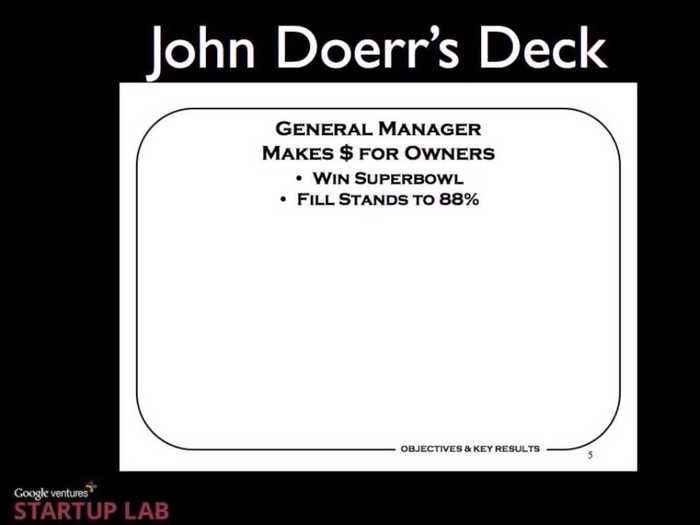
Advertisement
The General Manager assigns each of those objectives to the coach and the PR leader. As you can see, they have their own key results to achieve their objectives.
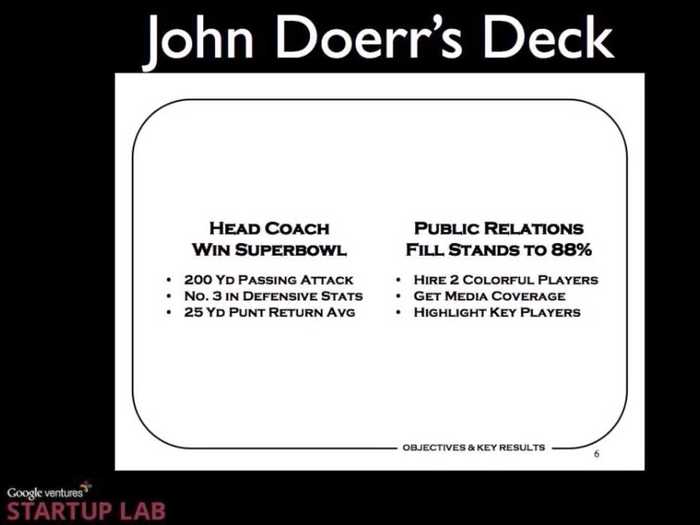
And then, below the coach, we get even deeper levels of OKR. The coach wanted to have his quarterback completing 200 yards per game. So, the offensive coordinator has to execute on the objective.
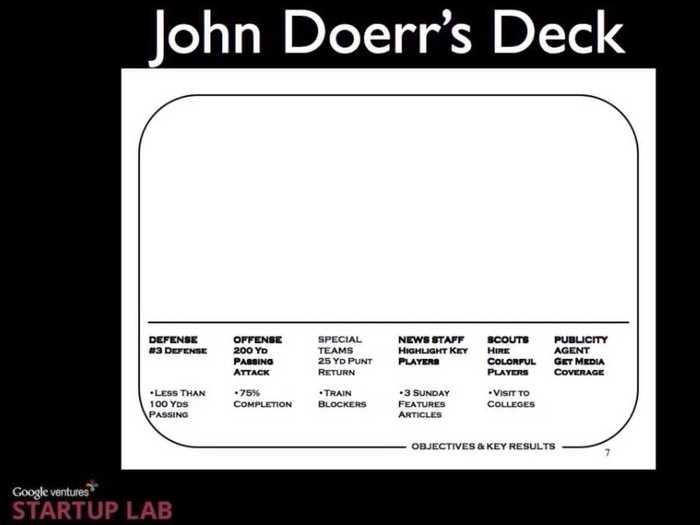
Advertisement
Why use this system? Here are four reasons. In essence, this is a simple, organizational tool that gets the entire company on the same page.
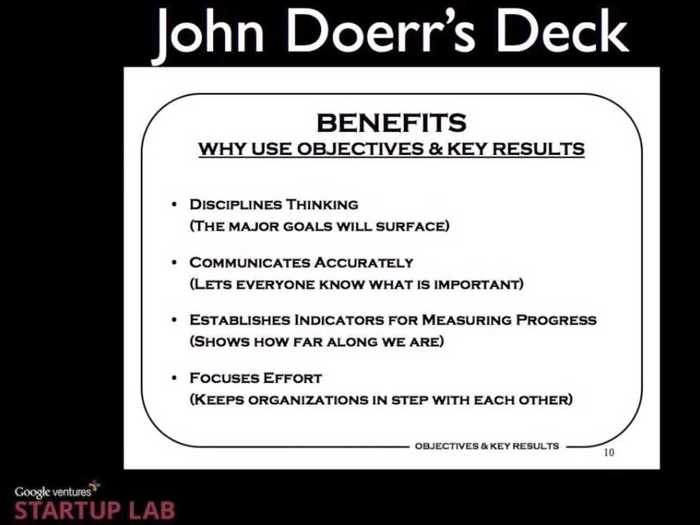
Here's how it works from top to bottom. The CEO, sets objectives, they go down to the department, then to the group, then to the employee. Just like how the football team example worked.
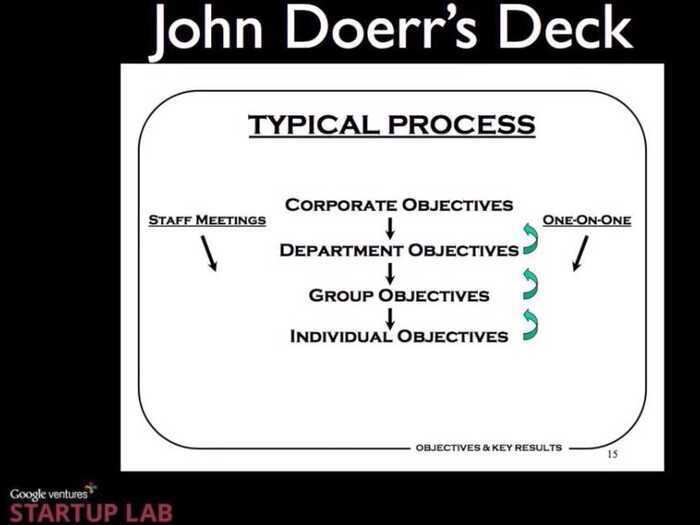
Advertisement
To set OKRs, employees meet with their managers. It's a form of negotiating. The employee says, I want to do X, and the employer says I want you to do Y. They meet in the middle for goal Z.
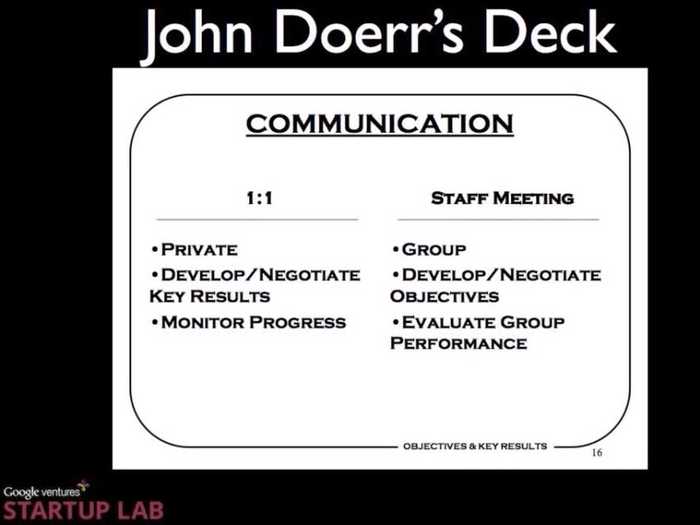
This is the typical cycle for how OKRs work through the year.
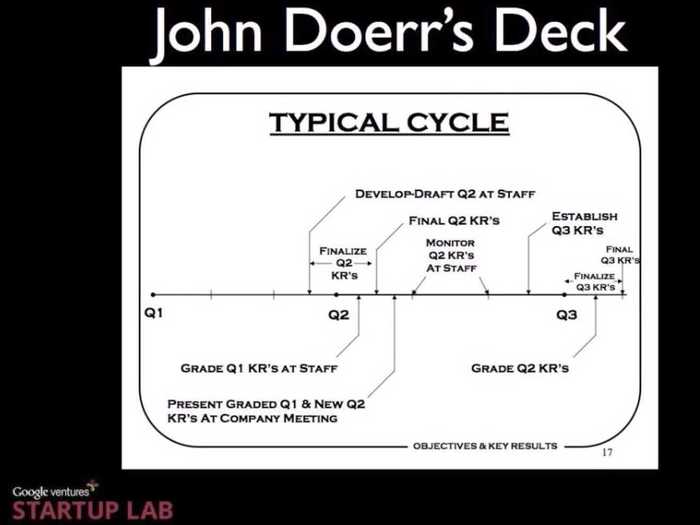
Advertisement
Here are some basics on doing an OKR. The most important thing: Do not give yourself too many key results. You want 6 or less, otherwise you will be over extended. Each of your key results is graded at the end of the quarter on a scale of 0 to 1. Your goal is to get a .6-.7. If you get a 1, you set an easy target. You want to always be striving towards a tough goal.
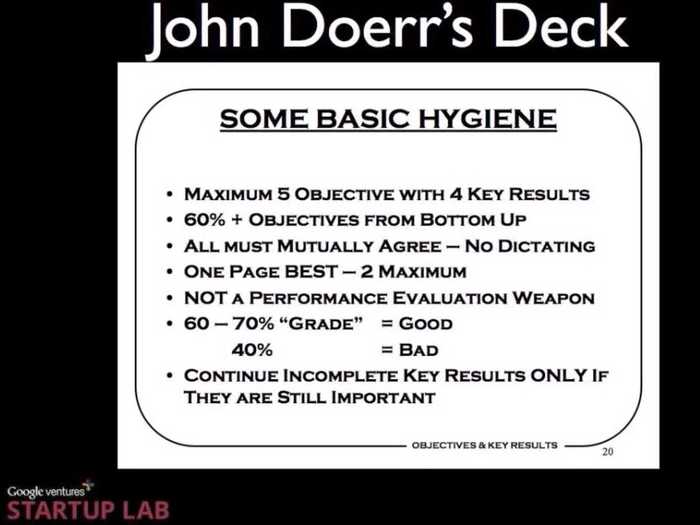
Here's the end product of what happens when OKRs are working.
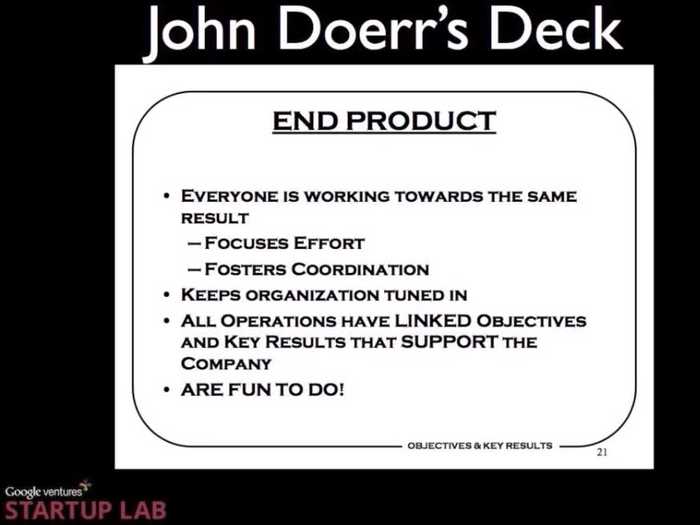
Advertisement
Here's how to set an OKR. The most important thing: Make it measurable. Don't say, "I want to make the site prettier." Say, "I want to increase engagement by 15%."
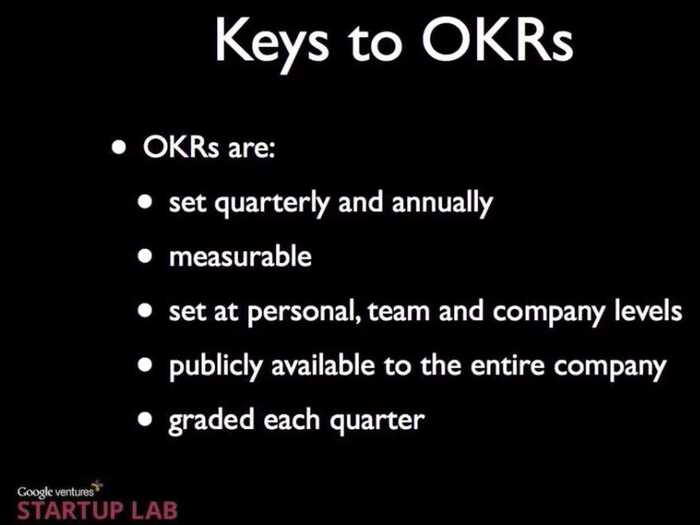
More on how to make an OKR. Ambition and measurable results are important.
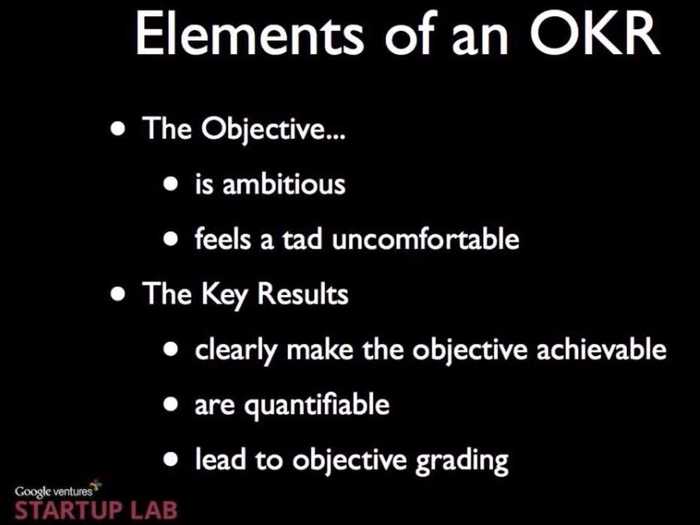
Advertisement
Here's how an OKR works through your company.
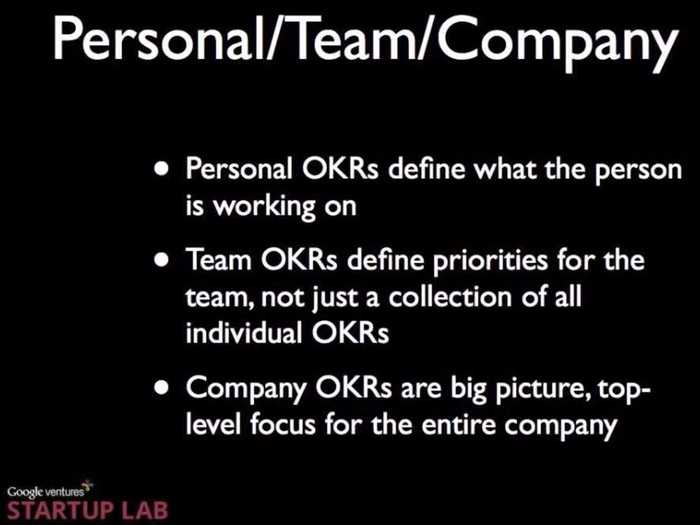
Rick Klau, who gave this presentation, ran through some of his OKRs. During the financial crisis, Google was looking at properties it owned that could generate revenue. It decided that Blogger could be making more money, so Klau came up with ideas to generate revenue for Blogger.
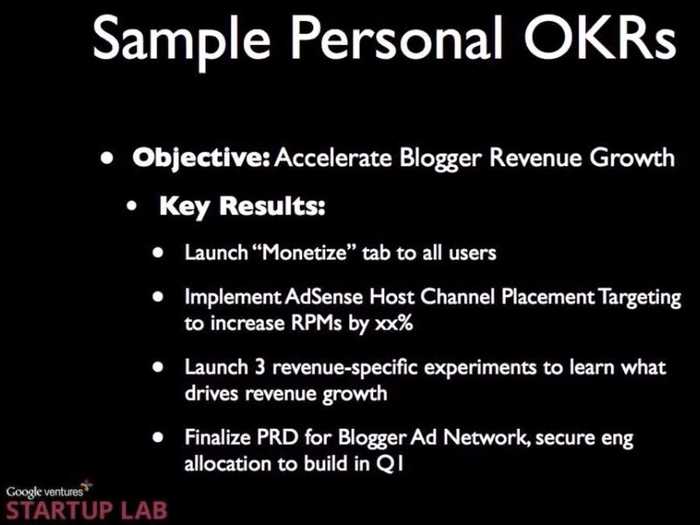
Advertisement
He also wanted to increase traffic, so he came up with ideas for increasing traffic.
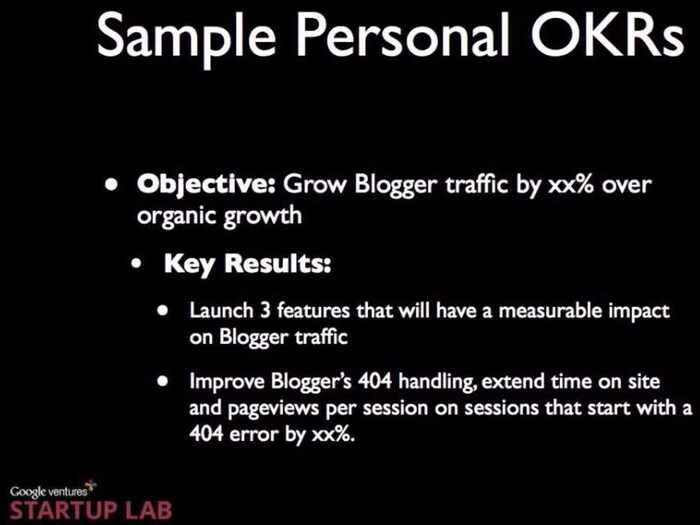
And finally, Blogger's reputation was taking a hit, so he wanted to fix that.
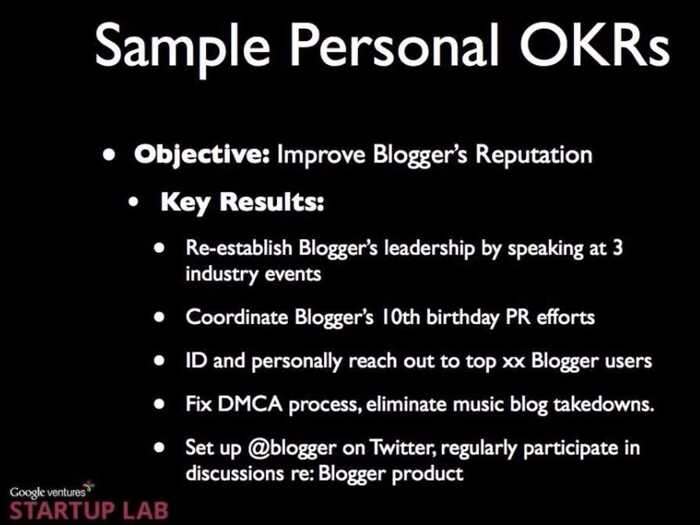
Advertisement
At the end of the quarter, he graded the results. If it's a yes/no thing, then the grade is 1 or 0. He launched the tab, so he gets a 1.
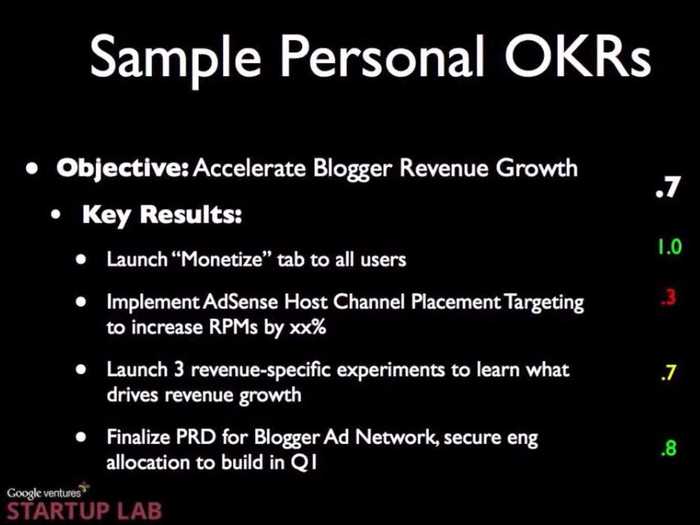
Here, you can see that he failed at getting the 404 page fixed. So, he gave himself a .3.
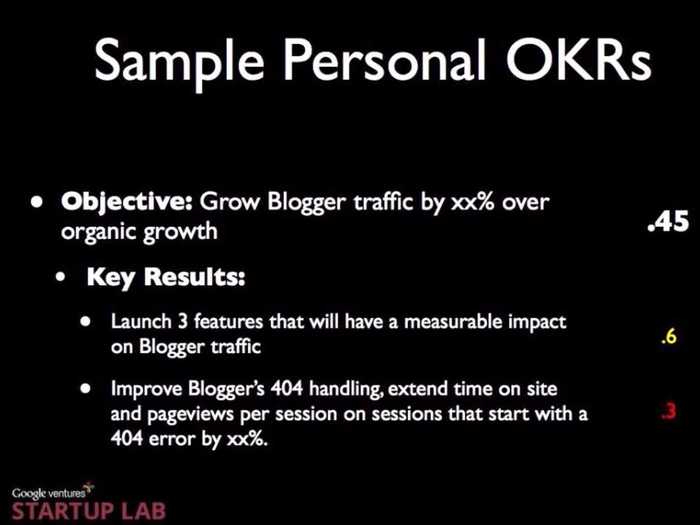
Advertisement
Grading should only take a few minutes! Don't spend a lot of time on it.
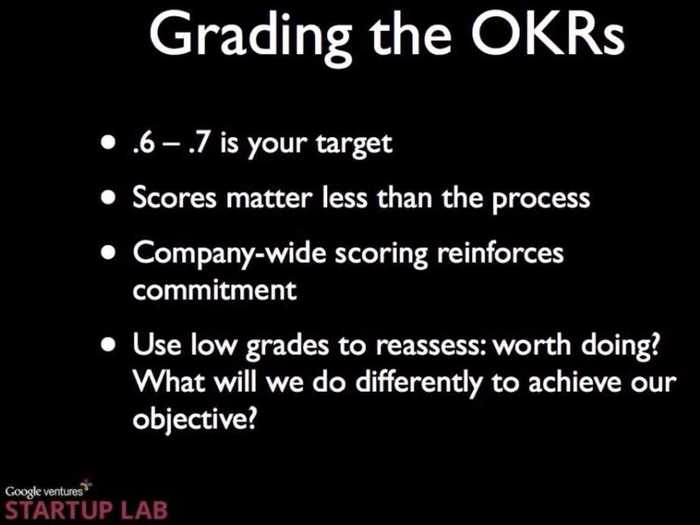
This is also important. Be open about your OKRs. Tell the whole company about them. Google employees can see each others OKRs.
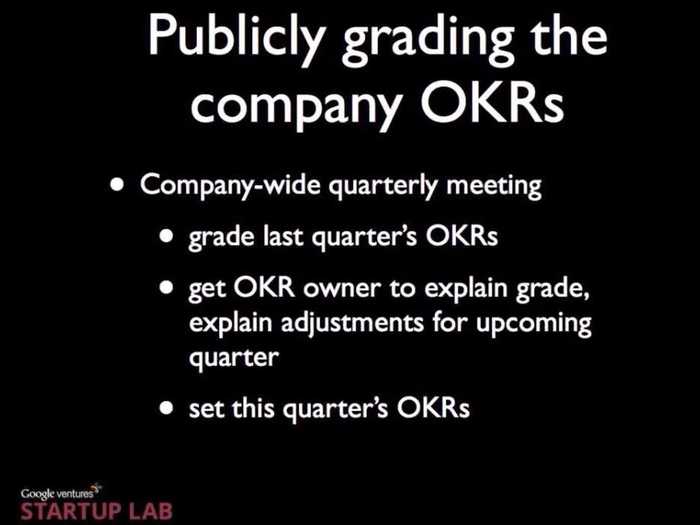
Advertisement
Also important, managers need to buy in on OKRs. This is an email of one of the product managers shaming employees for not submitting OKRs.
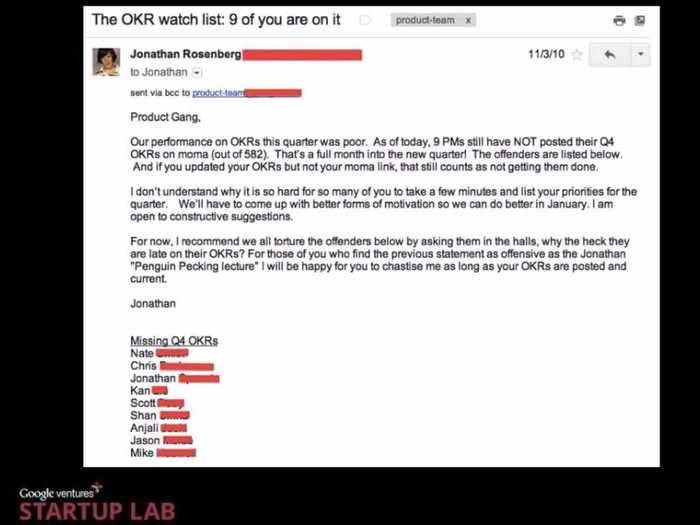
And finally, here's a timeline of how an OKR works.
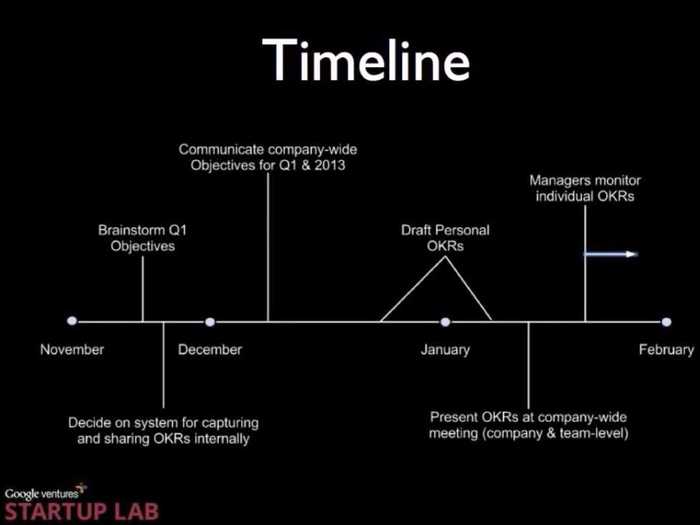
Advertisement
In summation...

OKRs are a clean, simple system for keeping employees and companies working towards the same goals.
An employee has a handful of objectives, then specific, measurable ways to achieve the objective.
Everyone gets to see everyone else's OKRs. A Google engineer can see Larry Page's OKRs, for instance. It's important for everyone to see everyone else's OKRs because it keeps everyone on the same page.
If you're not using this system, you should!
And now, watch the presentation.

Advertisement
Popular Right Now
Popular Keywords
Advertisement
